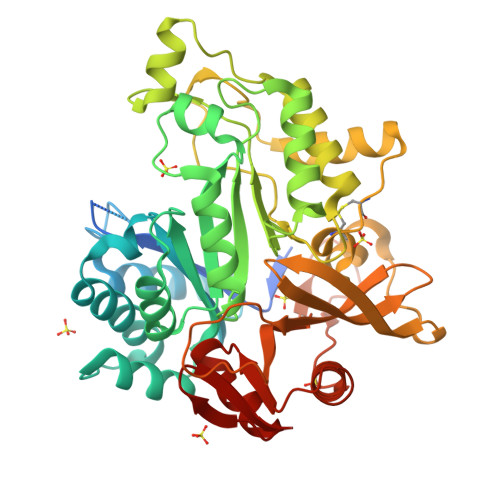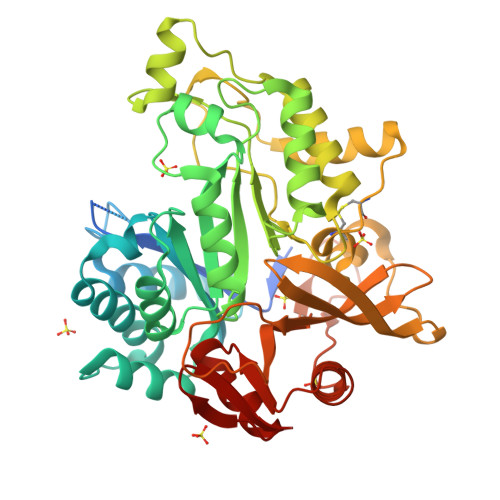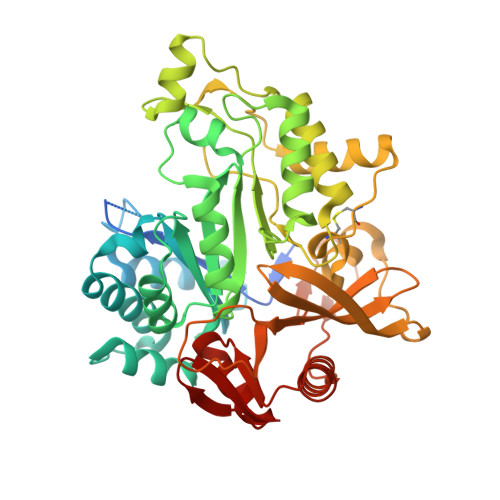The Elongator subunit Elp3 is a non-canonical tRNA acetyltransferase.
Lin, T.Y., Abbassi, N.E.H., Zakrzewski, K., Chramiec-Glabik, A., Jemiola-Rzeminska, M., Rozycki, J., Glatt, S.(2019) Nat Commun 10: 625-625
- PubMed: 30733442
- DOI: https://doi.org/10.1038/s41467-019-08579-2
- Primary Citation of Related Structures:
6IA6, 6IA8, 6IAD, 6IAZ - PubMed Abstract:
The Elongator complex catalyzes posttranscriptional tRNA modifications by attaching carboxy-methyl (cm 5 ) moieties to uridine bases located in the wobble position. The catalytic subunit Elp3 is highly conserved and harbors two individual subdomains, a radical S-adenosyl methionine (rSAM) and a lysine acetyltransferase (KAT) domain. The details of its modification reaction cycle and particularly the substrate specificity of its KAT domain remain elusive. Here, we present the co-crystal structure of bacterial Elp3 (DmcElp3) bound to an acetyl-CoA analog and compare it to the structure of a monomeric archaeal Elp3 from Methanocaldococcus infernus (MinElp3). Furthermore, we identify crucial active site residues, confirm the importance of the extended N-terminus for substrate recognition and uncover the specific induction of acetyl-CoA hydrolysis by different tRNA species. In summary, our results establish the clinically relevant Elongator subunit as a non-canonical acetyltransferase and genuine tRNA modification enzyme.
Organizational Affiliation:
Max Planck Laboratory, Malopolska Centre of Biotechnology (MCB), Jagiellonian University, Krakow, 30-387, Poland.

















